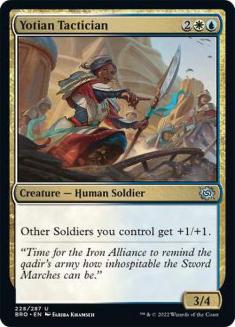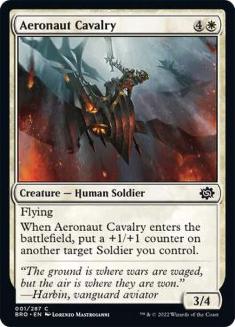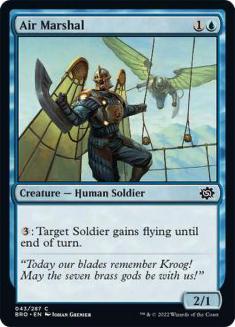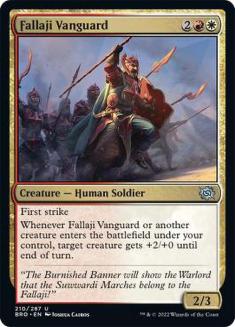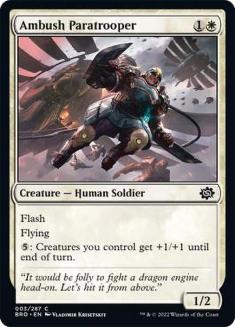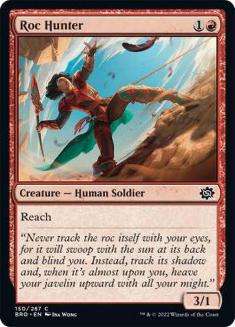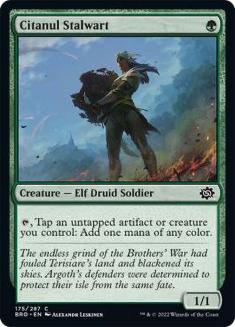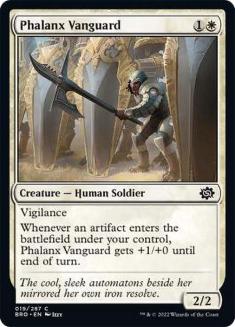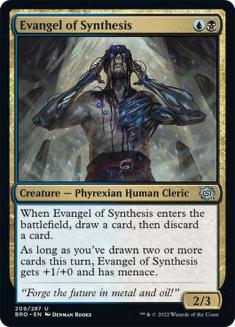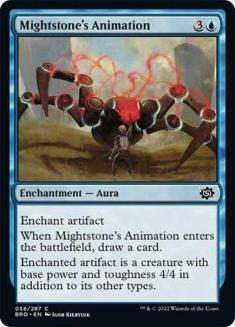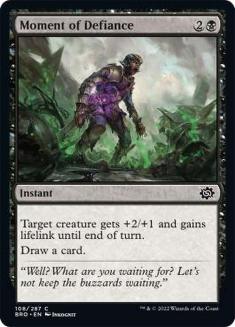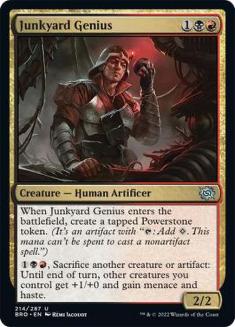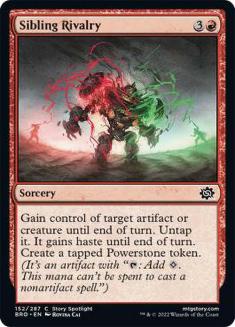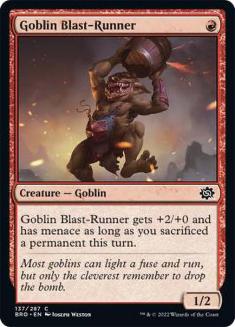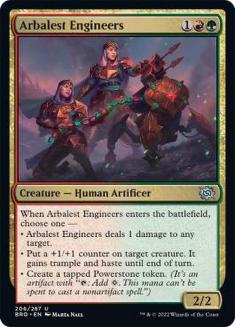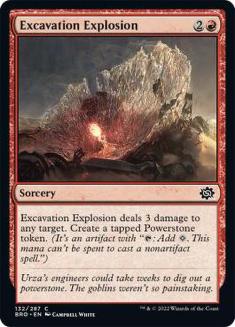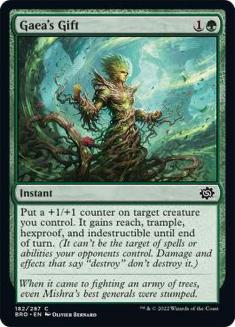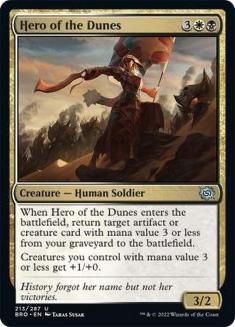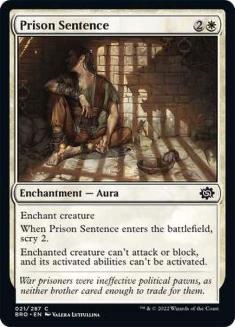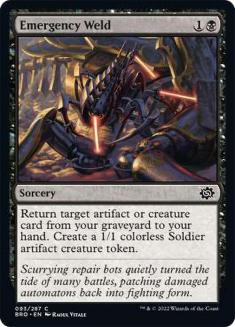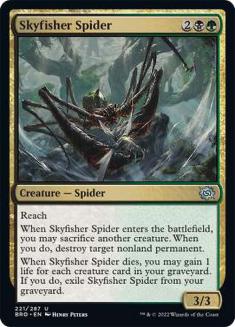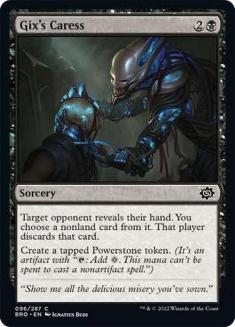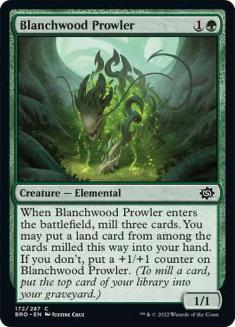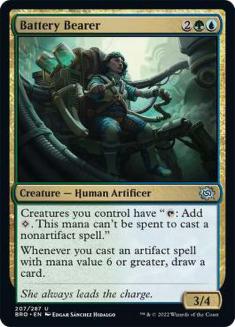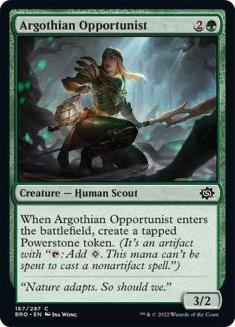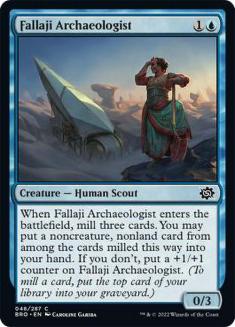The Brothers’ War returns to MTG Arena for the week in another flashback draft!
I had a lot of fun with this set, with a lot of fun splashes being enabled by retro artifacts like Chromatic Star or Elsewhere Flask, in addition to Evolving Wilds and Energy Refractor. There are plenty of strong two-color decks as well, with most (sorry, Simic) being capable of getting a trophy for your shelf. Let’s check them out!
Tier 1
Azorius
Azorius is a creature-based deck, with a Soldier typal theme. Scrapwork Cohort gets an extra bonus in the deck due to its creature type and general creature-based strategy. You will often have a combination of aerial and ground threats, as opposed to a traditional Azorius deck that relies on flyers to push damage. You want to construct your deck with high creature density, an aggressive curve, and a small top end (about two five-drops). Cantrips are still fine here, but you be much better off casting a Turn 2 Phalanx Vanguard than an Energy Refractor.
Boros
Boros is a traditional aggro deck, sporting aggressive early-game creatures paired with removal and combat tricks like Whirling Strike and Loran’s Escape. Scrapwork Mutt and Airlift Chaplain help to keep your hand full of threats. Supply Drop is a pretty average card in most decks, but it can be great in these decks, as it will allow you to win a combat and draw you a card if you run out of gas.
Tier 2
Izzet
Izzet acts as an artifact deck. Third Path Iconoclast can take over games fairly easily, and with multiples, cards like Mishra’s Onslaught and Sigil of Valor become much more appealing. Machine Over Matter reliably costs one mana, and is a very potent trick for the deck. Mightstone’s Animation is also at its best in the deck, especially if you get a hold of Levitating Statue (also great for the deck).
Selesnya
Selesnya is an artifact-base theme, but often acts as a nice base for a multicolor deck. Citanul Stalwart is pretty close to a Birds of Paradise, assuming you have plenty of Powerstones, artifacts, or small creatures you don’t mind tapping. The retro artifacts provide plenty of cantrips like Chromatic Star, Ichor Wellspring, or Mishra’s Bauble, all of which will help trigger Yotian Dissident or Sarinth Steelseeker. The deck tends to go wide, and can use both large creatures and Alloy Animist to finish games.
Tier 3
Dimir
Dimir is a typical control-like deck, with a “draw two cards per turn” sub-theme. Trench stalker and Lat-Nam Adept are the payoffs at common, with Thopter Mechanic and Gurgling Anointer being strong payoffs and often win conditions at uncommon. The deck also uses Moment of Defiance incredibly well, helping you to survive until the late-game.
Rakdos
Rakdos is back, with an aggressive sacrifice theme. There are plenty of sacrifice outlets within the color pair, with Penregon Strongbull and Powerstone Fracture among the best commons. Goblin Blast-Runner is very powerful in the deck, with cards like Evolving Wilds, Mishra’s Bauble, and Bitter Reunion (among many others) enabling a 3/2 with menace most turns. Sibling Rivalry is another all star for the deck, and if you obtain enough copies, the otherwise unplayable Kill-Zone Acrobat becomes very powerful for the free sacrifice outlet.
Gruul
Gruul is a traditional beatdown deck, with bigger creatures that can be cast via Powerstones. Boulderbranch Golem is very strong in the deck, and often helps turn the corner. Red doesn’t offer anything of specific significance at common; removal spells and smaller creatures are a necessity, but most options fill that role. Mask of the Jadecrafter is the best late-game threat for the deck, creating two creatures that should outsize anything your opponent has on the battlefield.
Orzhov
Orzhov is a traditional value deck. It has no shortage of removal at common, like Disenchant, Prison Sentence, Disfigure, and Agonizing Remorse. It also has graveyard recursion in Recommission, Emergency Weld, No One Left Behind, and Hero of the Dunes. This makes Airlift Chaplain and Ravenous Gigamole even more powerful for the archetype. It often wins by grinding your opponent out of resources.
Golgari
Golgari is another grindy deck, with some nice graveyard synergies throughout. None of the graveyard payoffs are really worth building around, just more of a bonus that comes with the guild. Skyfisher Spider is one of the strongest uncommons in the set, as killing threats and gaining life on the way out is exactly what the deck wants to do. The deck can also use Powerstones from Argothian Opportunist or Gix’s Caress well, as the deck often wins off the back of big green creatures like Mask of the Jadecrafter and Boulderbranch Golem.
Tier 4
Simic
Simic is one of the weakest archetypes of the format because it goes for the theme of playing very large prototype creatures, and that’s about it. The problem when you eventually cast a ten-mana Rust Goliath is that it dies to Disenchant and the game is over. The deck itself isn’t unplayable, but going for the huge creatures is most definitely a trap. A functional Simic deck will just be a combination of good blue and green cards using more reasonable prototypes like Boulderbranch Golem and Iron-Craw Crusher to end games.
I hope this helps you enjoy some drafts of The Brothers’ War.
Lose and Learn, Learn and Win!

